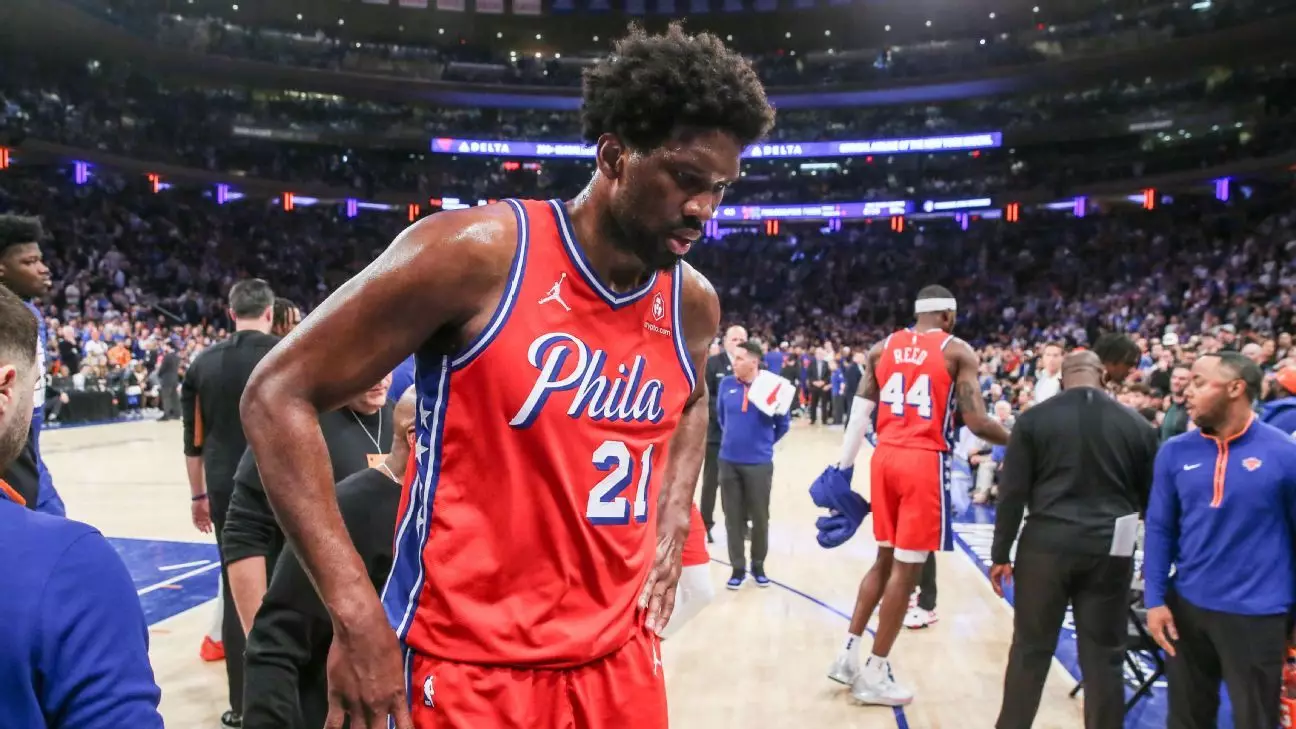The National Basketball Association (NBA) is set to launch an investigation into the Philadelphia 76ers in light of their handling of Joel Embiid’s player participation. Although the organization has always been careful with how it manages star players, this particular situation highlights the complexities involved in keeping top athletes healthy while attempting to maintain competitiveness throughout a grueling season. The decision to rest Embiid during the preseason and the start of the regular season raises pertinent questions regarding appropriate practices for player health management within the league.
The reasoning behind Embiid’s inactivity—labeled as “left knee injury management”—is indicative of broader trends in professional sports, where the prevention of injury often outweighs the desire for immediate performance. Despite being a formidable force on the court and a previous NBA MVP, Embiid’s ongoing struggle with knee issues led to him missing all of the preseason and the first three games of the current season. It sets a significant precedent whereby superstar athletes are managed not just for their current state but for long-term availability, particularly heading into the playoffs.
The approach taken by the 76ers has been methodical. The team has emphasized that Embiid is responding positively to his individualized recovery plan, which includes plans for scrimmages and ongoing evaluations. However, the decision to prioritize his health raises red flags, especially when considered in light of league policies aimed at ensuring player participation during national broadcasts. The 76ers’ president of basketball operations, Daryl Morey, acknowledged that the organization would be selective in how they deploy both Embiid and another star player, Paul George, particularly avoiding back-to-back games. The transparency of this strategy could be perceived as either a proactive measure or a calculated one to preempt any negative judgment from the NBA.
The conversation surrounding load management in the league has only intensified, especially given Embiid’s remark about potentially never playing back-to-back games for the remainder of his career. This shared experience among players, many of whom are similarly cautious about injury concerns, marks a new narrative in the NBA that prioritizes longevity over short-term success. With Embiid shedding weight and committing to stable knee support, the stakes are higher not just for investment in individual players but for the integrity of the league as a whole.
As the season unfolds, all eyes will remain on both Embiid’s physical condition and the 76ers’ adherence to set league standards. The delicate balance between maintaining top-tier performance and safeguarding athletes’ health has never been more evident. It will be interesting to witness the NBA’s response to this investigation and how the outcome may influence not only Philadelphia’s season but also the broader operational practices surrounding player health management throughout the league. Ultimately, the 76ers’ case serves as a litmus test for all teams navigating the intricate terrain of player care and competitive integrity.


Leave a Reply